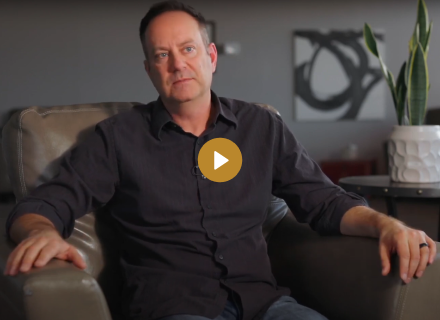Dr. Floyd Godfrey
Anxiety is a common emotional experience, but it manifests in different forms. It can be triggered by external factors—events, situations, or challenges outside our control—or it can be internally generated, arising from our own thoughts and perceptions. While both types of anxiety share similar symptoms, internal anxiety often feels more insidious because it stems from how we process information and interpret the world. Internal anxiety is largely shaped by our thought patterns, such as catastrophizing, engaging in negative self-talk, dwelling on the negative, and indulging in "what-if" thinking. Understanding these patterns and learning to manage them is crucial to overcoming internal anxiety.
Catastrophizing: Making Mountains Out of Molehills
One of the key ways we generate internal anxiety is through catastrophizing—a cognitive distortion where we anticipate the worst possible outcomes. This type of thinking takes a minor or hypothetical situation and blows it out of proportion, imagining disastrous consequences that may never occur. David Burns, a pioneer in cognitive behavioral therapy (CBT), describes this as a form of irrational thinking that triggers and amplifies anxiety. For instance, a small mistake at work might lead someone to believe they will be fired, lose their income, and end up in financial ruin, even though none of these outcomes are likely. By imagining the worst-case scenario, we inadvertently cause a surge of anxiety and stress.
Negative Self-Talk: The Inner Critic
Another significant contributor to internal anxiety is negative self-talk—the internal dialogue where we criticize and judge ourselves harshly. Instead of offering self-compassion or understanding, we engage in a relentless cycle of self-deprecation. Negative self-talk often reinforces feelings of inadequacy and fear, fueling anxiety from within. For example, after making a social blunder, an individual might tell themselves, "I'm so awkward; people must think I'm stupid." Over time, these negative assessments compound and make it difficult to manage anxiety, as they distort one's perception of reality and heighten emotional distress.
Burns emphasizes that these thoughts are not based on facts but rather on faulty interpretations. Cognitive behavioral therapy helps individuals recognize and challenge these distortions, replacing them with more balanced and realistic thoughts.
Dwelling on the Negative: The Perils of Rumination
Dwelling on the negative—also known as rumination—is a habit where individuals continuously focus on distressing or unfortunate events, often replaying them in their minds without resolution. This type of thinking traps people in a loop of anxiety, as they constantly relive their failures or negative experiences. Rumination not only maintains anxiety but can also intensify it over time, making it harder to escape the emotional spiral.
David Burns suggests that breaking free from this cycle requires a conscious effort to shift focus away from past mistakes and to practice mindfulness or engage in activities that foster positive emotions. By doing so, individuals can reduce their emotional reactivity and build resilience against anxiety.
What-If Thinking: Anticipating Future Fears
What-if thinking is another cognitive pattern that generates internal anxiety. It involves constant speculation about potential negative outcomes in the future, often in hypothetical situations. For instance, someone might worry, "What if I fail my exam?" or "What if I embarrass myself at the presentation?" This type of thinking leads to excessive worry about things that have not happened and may never happen, draining emotional energy and increasing anxiety.
Burns highlights the importance of challenging these thoughts by questioning their validity and likelihood. Cognitive-behavioral techniques, such as thought records, help individuals identify their "what-if" fears and examine whether these worries are realistic or based on irrational assumptions.
Educational Strategies and Therapeutic Intervention
Addressing internal anxiety requires a combination of education and therapeutic strategies. Cognitive behavioral therapy (CBT), as Burns advocates, is particularly effective in helping individuals identify and change the negative thought patterns that generate internal anxiety. CBT encourages individuals to recognize their distorted thinking, evaluate evidence for and against these thoughts, and replace them with more constructive and balanced perspectives.
Additionally, mindfulness practices, self-compassion exercises, and journaling can serve as valuable tools for those struggling with internal anxiety. By practicing these strategies, individuals can develop greater awareness of their thoughts, reduce emotional intensity, and foster a healthier mental environment.
Moving Forward
Understanding the difference between internal and external anxiety is key to managing emotional health. While external factors may be beyond our control, internal anxiety is largely shaped by how we think. By recognizing and challenging unhelpful thought patterns—such as catastrophizing, negative self-talk, dwelling on the negative, and what-if thinking—individuals can regain control over their emotional well-being. With the help of cognitive behavioral therapy and mindfulness, it is possible to reduce the intensity of internal anxiety and cultivate a more peaceful, balanced mind.
Floyd Godfrey, PhD is a Certified Mental Health Coach and has been guiding clients since 2000. He currently speaks and provides consulting and mental health coaching across the globe. To learn more about his services please visit his website: www.FloydGodfrey.com.
References
Burns, D. D. (1989). The Feeling Good Handbook. New York: Plume.



